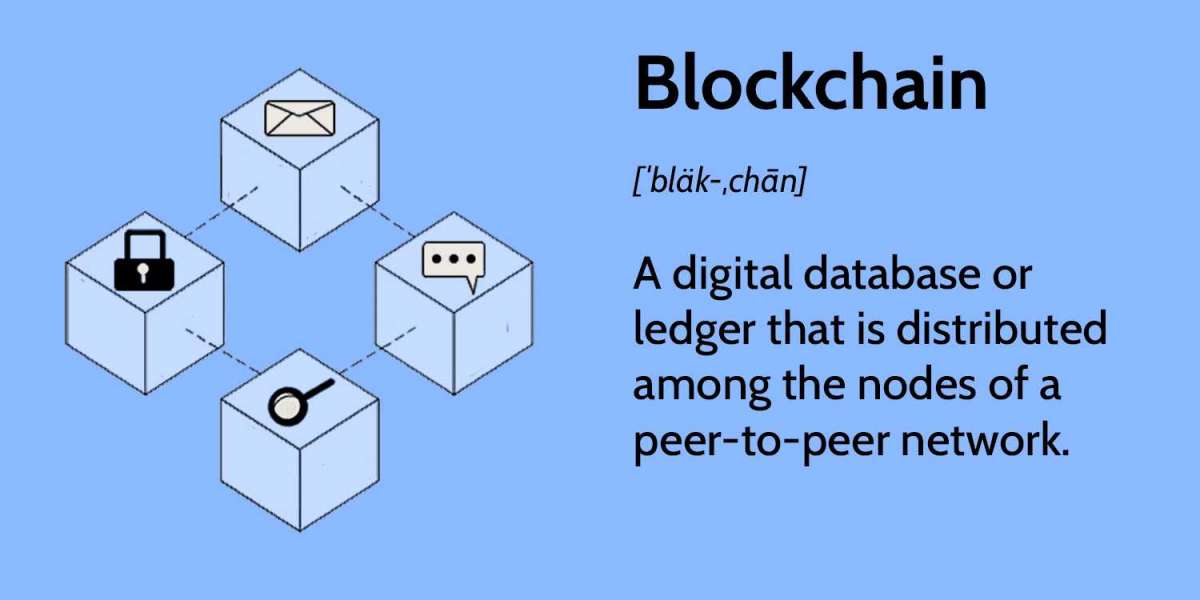Introduction :
In recent years, blockchain technology and cryptocurrency have emerged as revolutionary forces in the world of finance and beyond. With the potential to disrupt traditional financial systems, streamline various industries, and democratize access to financial services, these technologies are reshaping the digital landscape. This blog delves into the latest developments in blockchain and cryptocurrency, exploring their impact, current trends, and the challenges that lie ahead.
Understanding Blockchain Technology
At its core, blockchain is a decentralized ledger technology that ensures data integrity and transparency. It consists of a chain of blocks, each containing a list of transactions. This ledger is maintained across a network of computers (nodes), which collectively validate and record transactions.
1. Decentralization: Unlike traditional centralized systems, where a single entity controls the data, blockchain distributes control across multiple participants. This decentralized nature reduces the risk of data tampering and fraud.
2. Immutability: Once recorded, data on the blockchain is immutable, meaning it cannot be altered or deleted. This ensures the integrity of transaction records and enhances trust in the system.
3. Transparency: All participants in the blockchain network can access the entire ledger, providing transparency and enabling verification of transactions without the need for intermediaries.
Cryptocurrency: The Digital Asset Revolution
Cryptocurrency is a digital or virtual form of currency that uses cryptographic techniques to secure transactions and control the creation of new units. Bitcoin, the first and most well-known cryptocurrency, paved the way for thousands of others, each with its own unique features and use cases.
1. Bitcoin and Ethereum: Bitcoin remains the most prominent cryptocurrency, serving as a store of value and a medium of exchange. Ethereum, on the other hand, introduced smart contracts—self-executing contracts with the terms of the agreement directly written into code—which expanded the use cases of blockchain technology beyond simple transactions.
2. Altcoins and Tokens: Beyond Bitcoin and Ethereum, a plethora of alternative cryptocurrencies (altcoins) and tokens have emerged. These include coins like Litecoin and Ripple, and tokens like Chainlink and Uniswap, each offering distinct functionalities and applications.
3. Decentralized Finance (DeFi): DeFi represents a growing sector within cryptocurrency that aims to recreate traditional financial services—such as lending, borrowing, and trading—using decentralized technologies. By eliminating intermediaries, DeFi platforms offer greater accessibility and efficiency.
Recent Developments and Trends
The world of blockchain and cryptocurrency is rapidly evolving. Here are some of the most significant recent developments and trends:
**1. Layer 2 Solutions: To address scalability issues in blockchain networks like Ethereum, Layer 2 solutions have been developed. These include technologies like rollups and state channels, which process transactions off the main blockchain while still ensuring security and interoperability.
**2. Non-Fungible Tokens (NFTs): NFTs are unique digital assets that represent ownership of a specific item or piece of content, often using blockchain technology. They have gained popularity in art, entertainment, and gaming, allowing creators to monetize their work in new ways.
**3. Central Bank Digital Currencies (CBDCs): Governments and central banks worldwide are exploring the concept of CBDCs—digital currencies issued and regulated by a central authority. CBDCs aim to combine the benefits of digital currencies with the stability and oversight of traditional fiat money.
**4. Regulatory Developments: As blockchain and cryptocurrency gain mainstream traction, regulators are increasingly focusing on establishing frameworks to address concerns related to security, fraud, and market manipulation. Recent regulations aim to balance innovation with consumer protection and financial stability.
**5. Environmental Concerns: The environmental impact of cryptocurrency mining, particularly Bitcoin, has become a prominent issue. The energy-intensive Proof-of-Work (PoW) consensus mechanism used by Bitcoin has raised concerns about its carbon footprint. In response, many projects are exploring or transitioning to more sustainable consensus mechanisms like Proof-of-Stake (PoS).
Impact on Various Industries
The implications of blockchain and cryptocurrency extend far beyond the realm of digital finance. Here’s how these technologies are making an impact across different sectors:
**1. Finance and Banking: Blockchain technology is streamlining financial transactions, reducing costs, and enhancing security. Cryptocurrencies provide alternative investment opportunities and facilitate cross-border payments with lower fees and faster processing times.
**2. Supply Chain Management: Blockchain’s transparency and traceability features are transforming supply chain management. By recording every step of the supply chain on a blockchain, businesses can enhance product tracking, reduce fraud, and improve efficiency.
**3. Healthcare: In healthcare, blockchain is being used to secure and manage patient data, streamline administrative processes, and enhance the integrity of clinical trials. By providing a secure and transparent way to handle medical records, blockchain can improve patient outcomes and data privacy.
**4. Voting Systems: Blockchain technology offers a potential solution to enhance the security and transparency of voting systems. By recording votes on a blockchain, election processes can be made more tamper-proof and verifiable, reducing the risk of fraud and ensuring the integrity of democratic processes.
**5. Real Estate: The real estate industry is leveraging blockchain to simplify property transactions, reduce fraud, and increase transparency. Blockchain can facilitate smart contracts that automate the transfer of property ownership, streamline the buying and selling process, and reduce the need for intermediaries.
Challenges and Considerations
Despite their potential, blockchain and cryptocurrency face several challenges and considerations that must be addressed for broader adoption:
**1. Scalability: As blockchain networks grow, scalability becomes a critical issue. Solutions like Layer 2 technologies and sharding are being explored to enhance transaction throughput and reduce latency, but achieving scalable solutions remains a complex challenge.
**2. Regulatory Uncertainty: The regulatory landscape for blockchain and cryptocurrency is still evolving. Varying regulations across countries can create uncertainty for businesses and investors, and finding a balance between innovation and regulation is crucial for the sustainable growth of these technologies.
**3. Security Risks: While blockchain technology enhances security in many ways, it is not immune to risks. Smart contract vulnerabilities, phishing attacks, and cybersecurity threats can pose significant risks to users and platforms. Ongoing efforts to improve security measures and best practices are essential.
**4. Adoption Barriers: Widespread adoption of blockchain and cryptocurrency requires addressing barriers such as technical complexity, user education, and integration with existing systems. Bridging these gaps will be crucial for mainstream acceptance and utilization.
**5. Environmental Impact: The environmental impact of blockchain, particularly in relation to energy consumption and carbon footprint, remains a pressing concern. The industry must continue to explore and adopt sustainable practices and technologies to mitigate environmental effects.
The Future of Blockchain and Cryptocurrency
The future of blockchain and cryptocurrency is bright, with ongoing advancements and innovations shaping their trajectory. As technology evolves, we can expect the following trends:
**1. Increased Institutional Adoption: More institutions, including banks and investment firms, are embracing blockchain and cryptocurrency. This trend is likely to continue, leading to greater mainstream acceptance and integration into traditional financial systems.
**2. Enhanced Interoperability: Efforts to improve interoperability between different blockchain networks will facilitate seamless interactions and exchanges of value, fostering a more connected and integrated blockchain ecosystem.
**3. Advancements in Privacy and Security: Privacy-enhancing technologies, such as zero-knowledge proofs, will play a crucial role in addressing concerns related to data privacy and security. These advancements will strengthen the trustworthiness of blockchain solutions.
**4. Expansion of Use Cases: As blockchain technology matures, new use cases and applications will emerge across various industries. Innovations in areas like decentralized identity, digital ownership, and decentralized applications (dApps) will drive further growth and adoption.
**5. Collaborative Ecosystems: The future will see increased collaboration between blockchain projects, governments, and businesses. Collaborative efforts will foster innovation, address challenges, and drive the development of interoperable solutions.
Conclusion
Blockchain and cryptocurrency are at the forefront of a technological revolution that has the potential to transform industries, redefine financial systems, and empower individuals. As these technologies continue to evolve, they promise to bring about significant changes in how we conduct transactions, manage data, and interact with digital assets.
While challenges remain, the progress made in recent years highlights the transformative power of blockchain and cryptocurrency. With ongoing advancements, regulatory developments, and increased adoption, we stand on the cusp of a new era in digital finance and technology. Embracing these changes and addressing the associated challenges will be key to unlocking the full potential of blockchain and cryptocurrency, paving the way for a more innovative and decentralized future.














